Enterobius vermicularis (Pinworm)
Pinworms belong to the phylum nematoda, order oxyuroidea and family oxyuridae (Gutiérrez, 2000).
The following are the general characteristics of pinworms (Markell, John, krotoski, 1999):
- The pinworm is a nematode.
- Affects all classes of people.
- Has high prevalence rates in children.
- Most common intestinal parasite.
- Infection is usually asymptomatic.
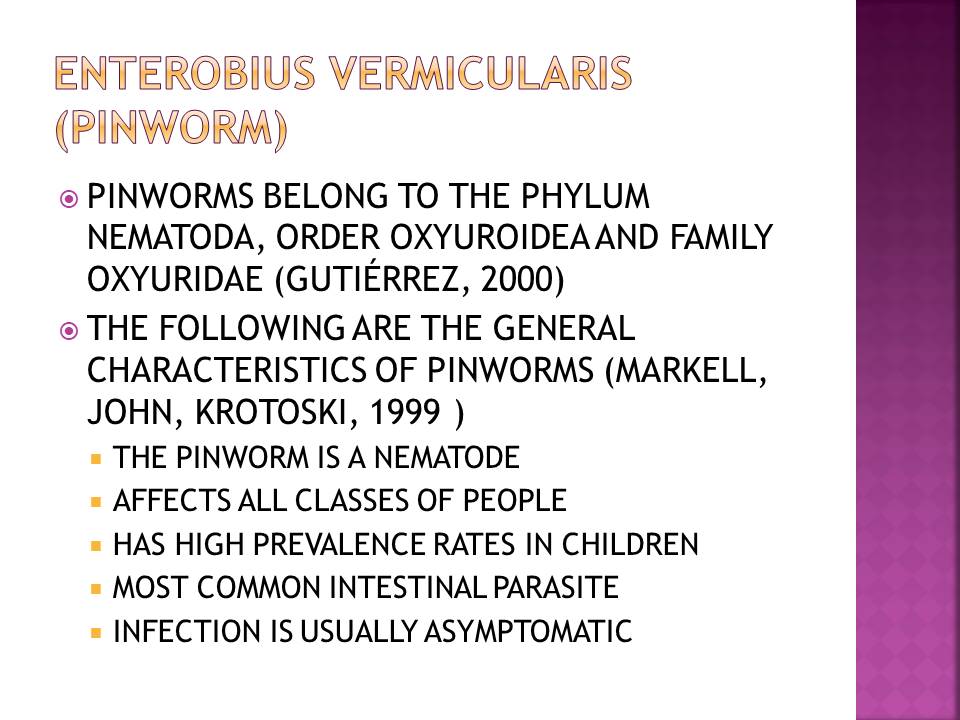
Morphology
The following are the morphological characteristics of pinworms (Michelle, kalvana, 2005).
- Adult worms are typically small.
- Female worms are larger than males.
- Females measure 8 to 13MM in length and 0.5MM in thickness.
- Males measure 2 to 5MM in length and 0.2 MM in thickness.
- Females have a pointed posterior.
- Males have a rounded posterior.
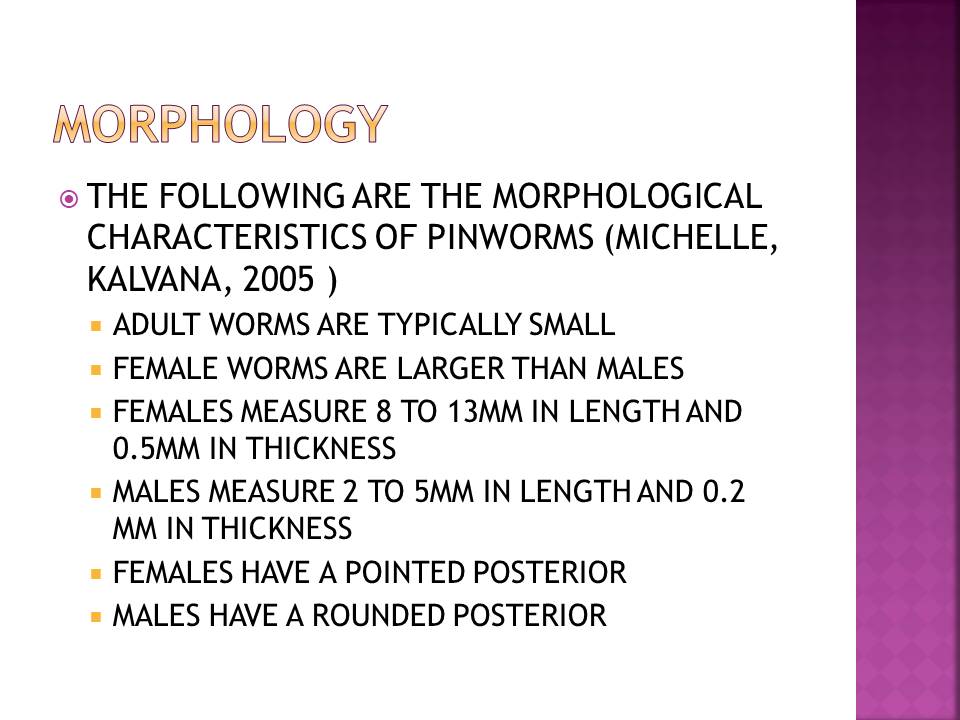
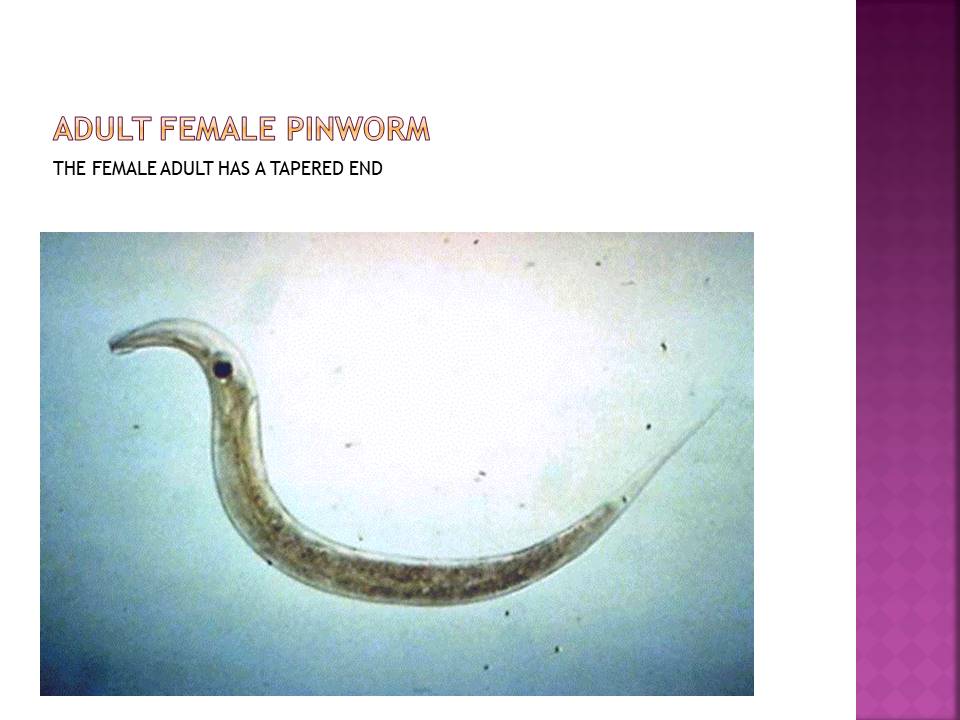
Presentation
Pinworm infection is generally asymptomatic but the most common symptom is perianal itching (Michelle, kalyana, 2005).
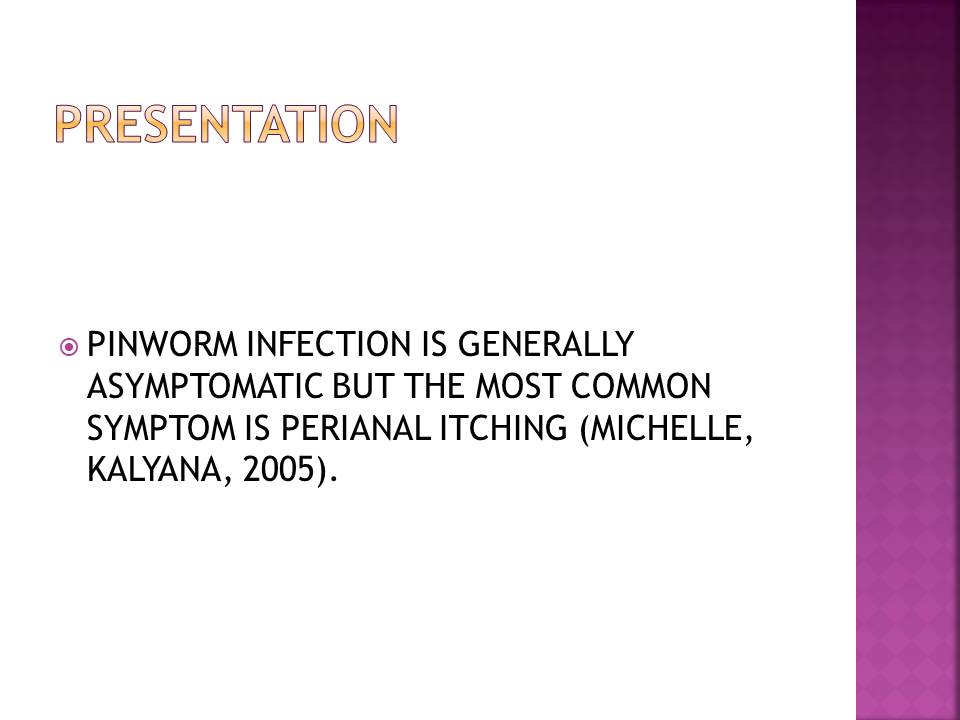
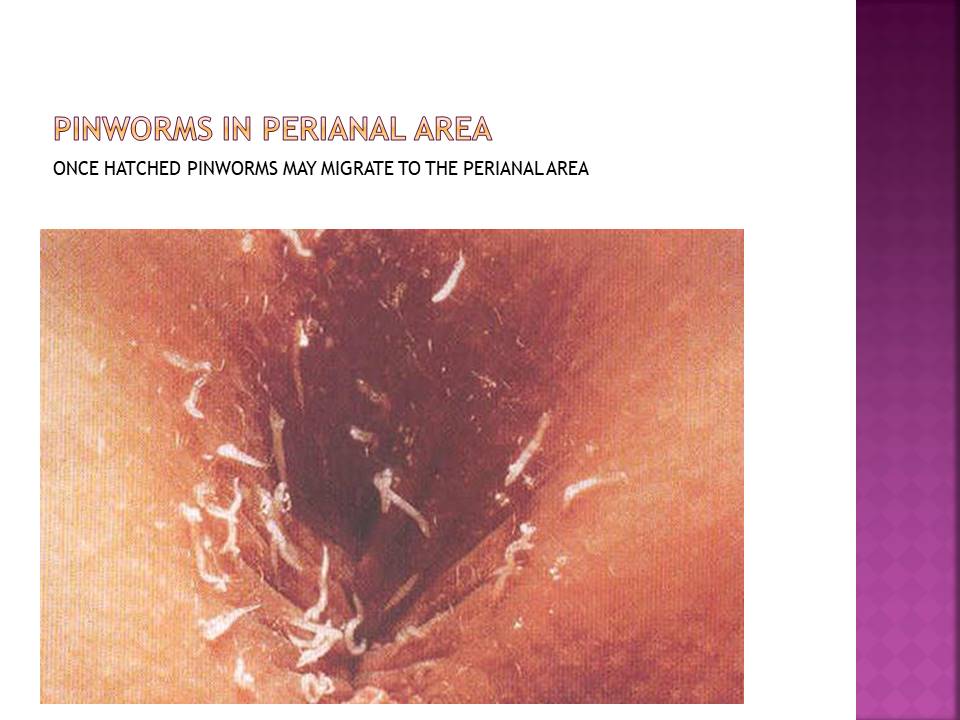

Eggs
Adult pinworms live in the lumen of the caecum and migrate to the anus at night to lay eggs (Gutiérrez, 2000).
Pinworm eggs have the following characteristics (Caldwell, 1982):
- Pinworm eggs are transluscent and have a sticky surface.
- Eggs measure 20-30Micrometres.
- The shell is thick and flattened on one side.
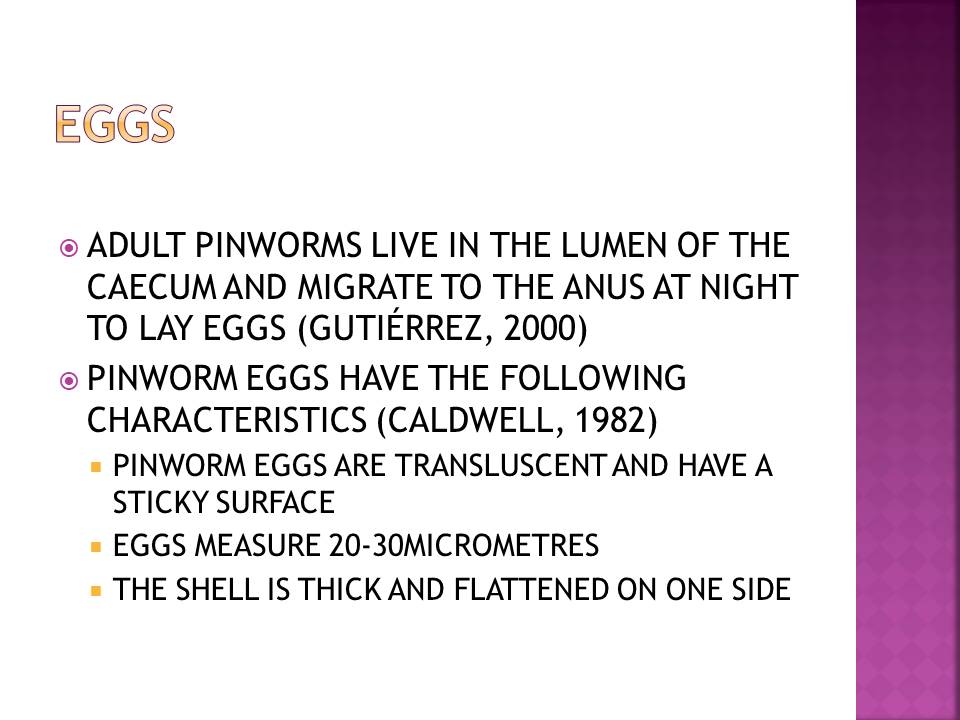
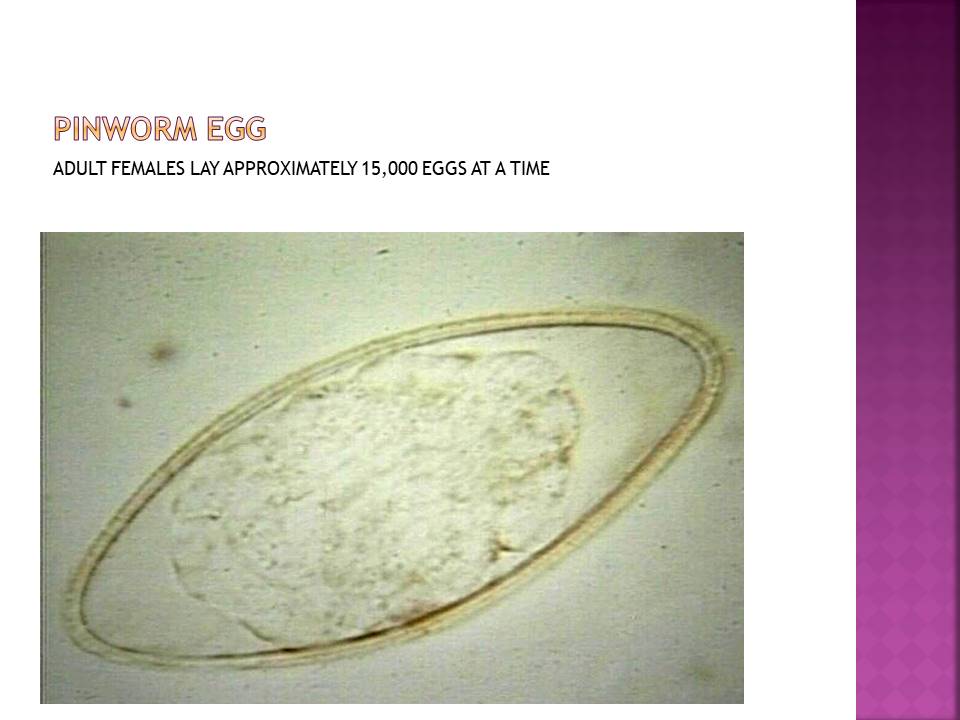
Transmission
Transmission is from human to human and can take the following forms(Cook, 1994):
- Eggs are deposited in the perianal area from where they are transported to the mouth through finger nails, night clothing and linen.
- Cats can also carry the eggs in their fur.
- Dust carrying the eggs can be inhaled and later swallowed.
- The eggs in the gastro intestinal tract hatch into larvae.
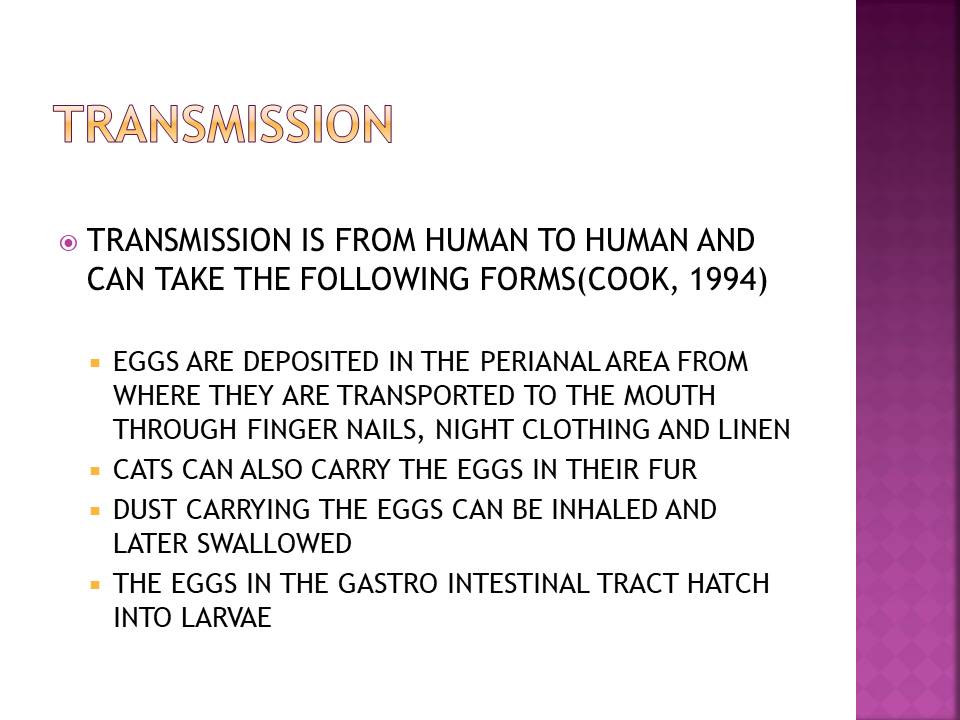
Diagnosis
Diagnosis is done by the scotch tape or cellophane test(Cook, 1994):
- The test should be done first thing in the morning.
- Tape is placed directly on perianal area.
- Eggs are then placed directly on a slide and viewed on a microscope.
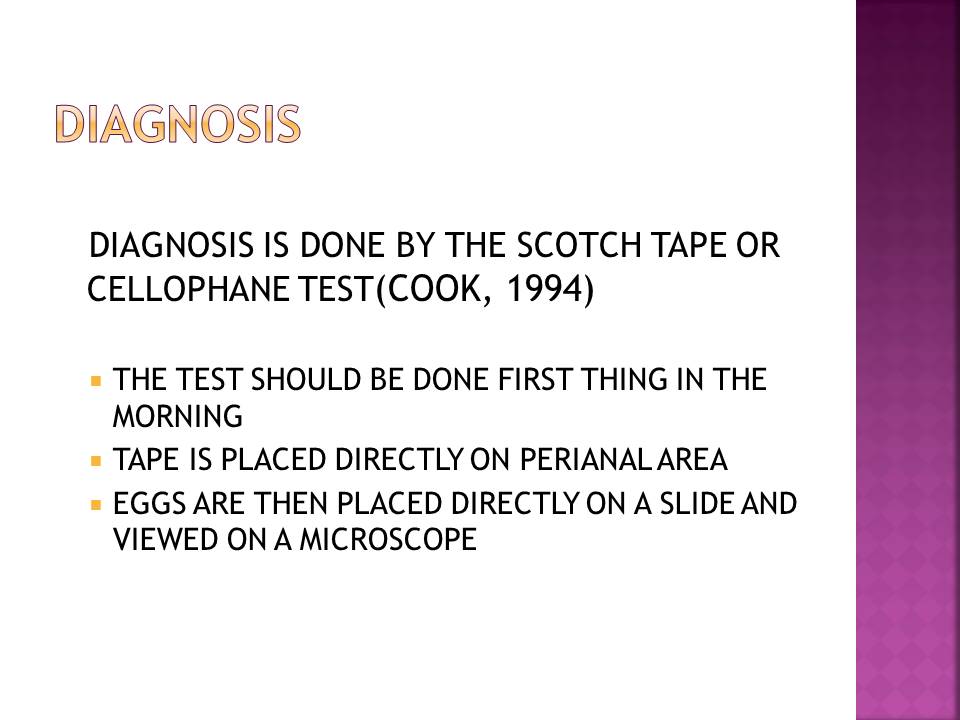
Treatment
There are two common treatment regimens (Michelle, kalvana, 2005):
- Option 1:
- Mebendazole 100MG by mouth on day 1.
- Dose should be repeated after 14 days to take care of reinfection.
- Option 2:
- Albendazole single dose 400MG/Adult; 100MG/Children under two years.
- The dose May be repeated after two weeks if necessary.
Alternative treatment for children is phenothiazine(Miller, Allen, 1942):
- It should be administered in chocolate tablets.
- 1 gram daily for 6-8 days.
- Careful monitoring should however be done because phenothiazine May cause a drop in hemoglobin levels.


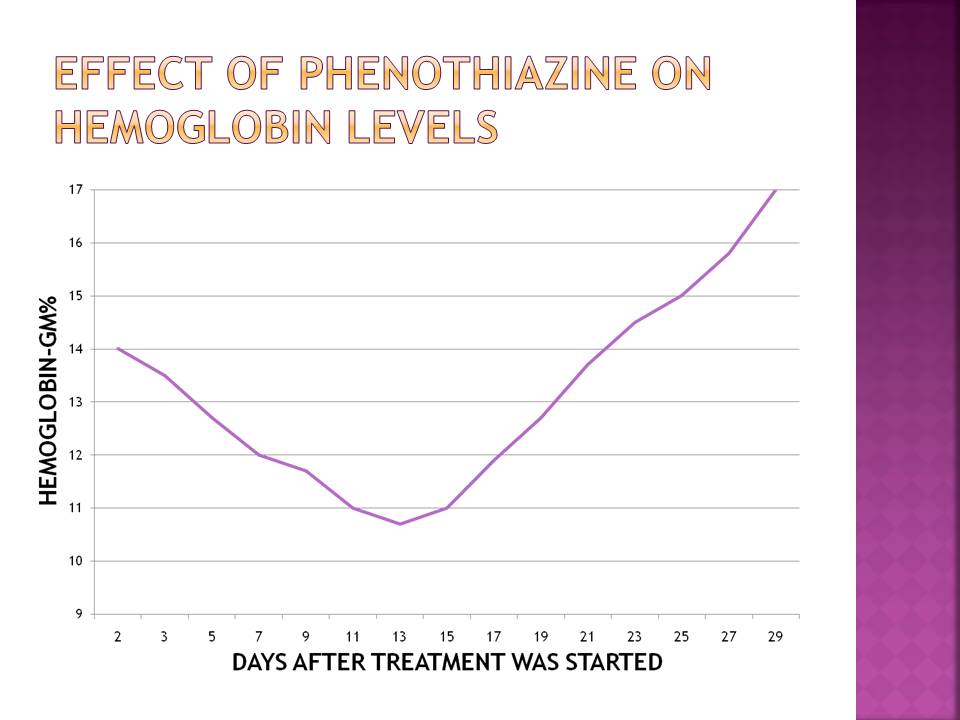
Prevention
Personal hygiene is the Key to prevention of pinworm infection (Caldwell, 1982):
- Keep the fingernails short.
- Wash the hands properly after visiting the toilet.
- Keeping the bedroom floor clean.
- Change beddings regularly; Preferrably on a daily basis.
- Always keep food covered.
- Children should wear gloves while sleeping.
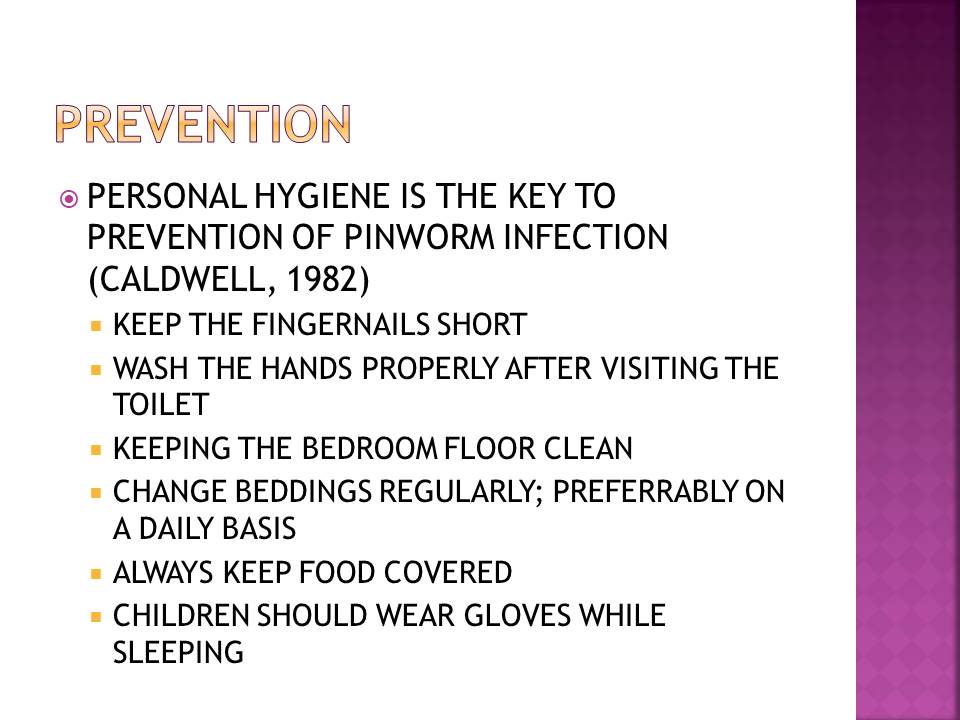
Complications
If untreated pinworms could lead to the following complications (Burkhat, burkhat, 2005):
- Appendicitis.
- Intestinal obstruction.
- Sialodenitis.
- Intestinal perforation.
- Enterocolitis.
- Hepatic infection.
- Urinary tract infections.
- Salpingitis.
- Epididymitis.
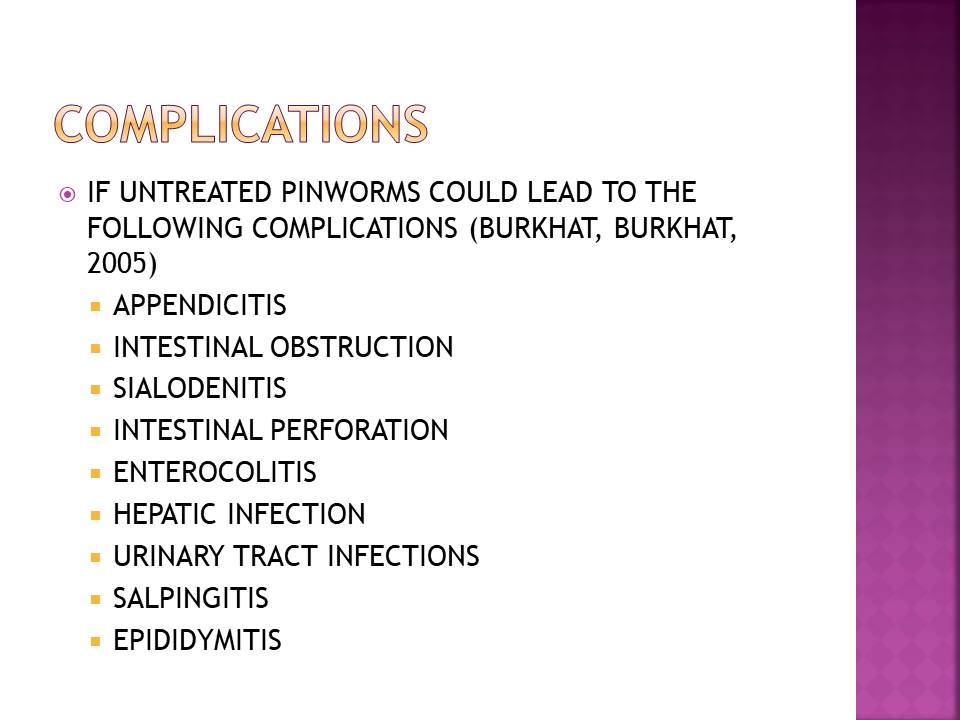
Facts
After copulation the male pinworm dies while the female procedes to lay egges in the region around the anus (Caldwell 1982).
The prevalence of the pinworm is between 20-40 million in the u.S:
- This is about 1 in every 10 americans (Burkhat, burkhat, 2005).
The pinworm was first discovered in Egypt (Michelle, kalvana, 2005 ).
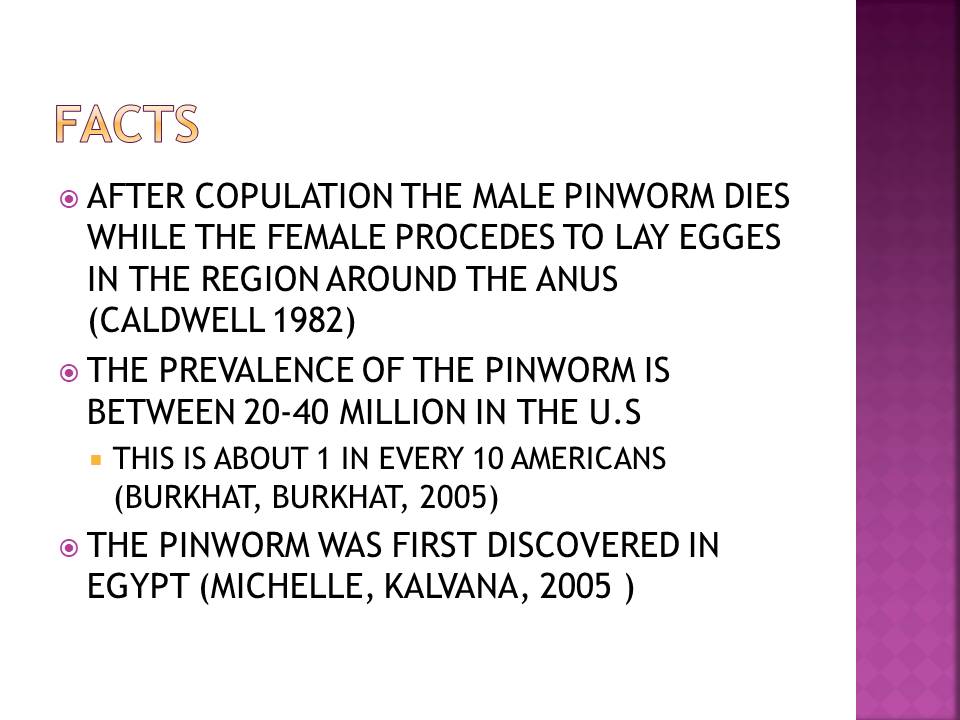
References
Cook, G.C. 1994. Enterobius vermicularis infection. Hospital for Tropical Diseases, London, 35, 1159–1162.
Burkhart , C.N., Burkhart, C.G. 2004. Assessment of frequency, transmission, and genitourinary complications of enterobiasis (pinworms). International journal of dermatology, 44, 837–840.
Caldwell, J. P. 1982. Pinworms (Enterobius Vermicularis). Can Fam Physician, 28: 306–309.
Markell, E., John, D., Krotoski., W. 1999. Markell and Voge’s Medical Parasitology (8th ed.). Saunders.
Michelle, P., Kalyana, I. 2005. Unusual Endoscopic and Microscopic View of Enterobius vermicularis: A Case Report With a Review of the Literature. Southern Medical Journal, 98, 9, 926-928.
Miller, J.M., Allen, D. 1942. Studies on pinworm Infections: Tests with Phenothiazine in the treatment of pinworm infections. Can Med Assoc J, 46,2,11-115.
Gutiérrez, Y. 2000. Diagnostic pathology of parasitic infections with clinical correlations (2nd ed.). Oxford University Press.